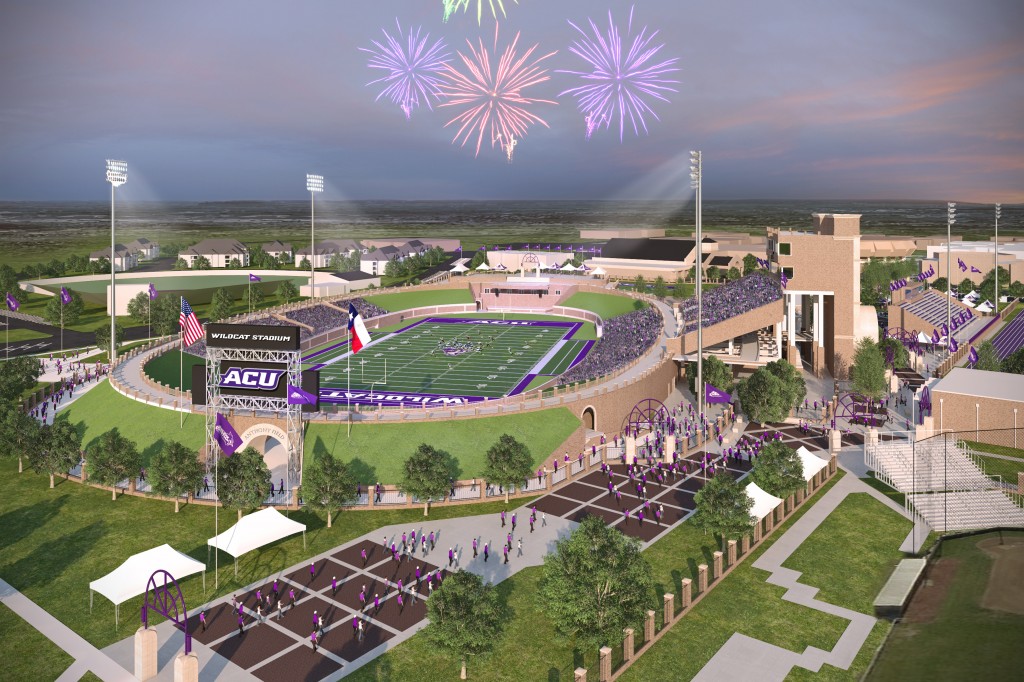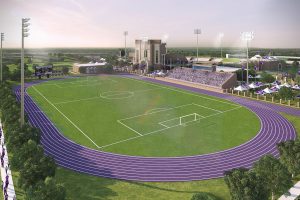ACU will soon play its home football games at an on-campus stadium for the first time since 1958 as a result of the largest donation in the university’s history. Wildcat Stadium will be built on the site of Elmer Gray Stadium.
Wildcat Stadium, which includes Anthony Field in recognition of alumni April and Mark Anthony, is projected to cost $30 million and will seat about 8,500 fans, with room for up to 12,000.
“We have such a storied history of excellence in athletics,” Dr. Phil Schubert, president of the university, said, “It’s been a longtime dream for a lot of people to have an on-campus stadium.”
The stadium is projected to open for the 2016 football season, said ACU director of athletics Jared Mosley.
“This is great for the ACU athletes to have new training facilities and a place to call home, but that pales in comparison for what it will mean for the rest of the campus,” Mosley said. “We’re looking forward to creating an exciting game day experience for everyone.”
A second stadium will be constructed for ACU’s track and field teams and the women’s soccer program. This new stadium will replace the soccer pitch south of Wells Field and will seat 1,000 fans.
Schubert said the track and field and soccer complex will likely be the first athletic facility to be built – possibly during the late summer or early fall. This needs to be handled first as to not disrupt track and field team’s training, he said, then construction can begin on a football stadium after completion of fundraising.
The ACU football team will continue to play games at Shotwell Stadium, Mosley said. He also said ACU’s move to Div. I did not require the university to construct a home stadium – Shotwell Stadium fulfilled Div. I’s requirements – there were other advantages.
Schubert said he sees the stadium enhancing students’ experience at ACU.
“The idea of game days at ACU’s campus being different, exciting and maybe more of a bigger-school-feel, while still maintaining the close-knit community and the pride from our alumni and current students is really exciting,” Schubert said. “It’ll create a whole host of new traditions.”
He said it was important to maintain the university’s connectivity when planning for a stadium.
“The architects have paid close attention to promoting that as part of the experience in the facilities,” Schubert said. “So creating pedestrian walkways and traffic flow and ways to draw people into the center of the campus on game days to the stadium – we feel like that’s important.”



